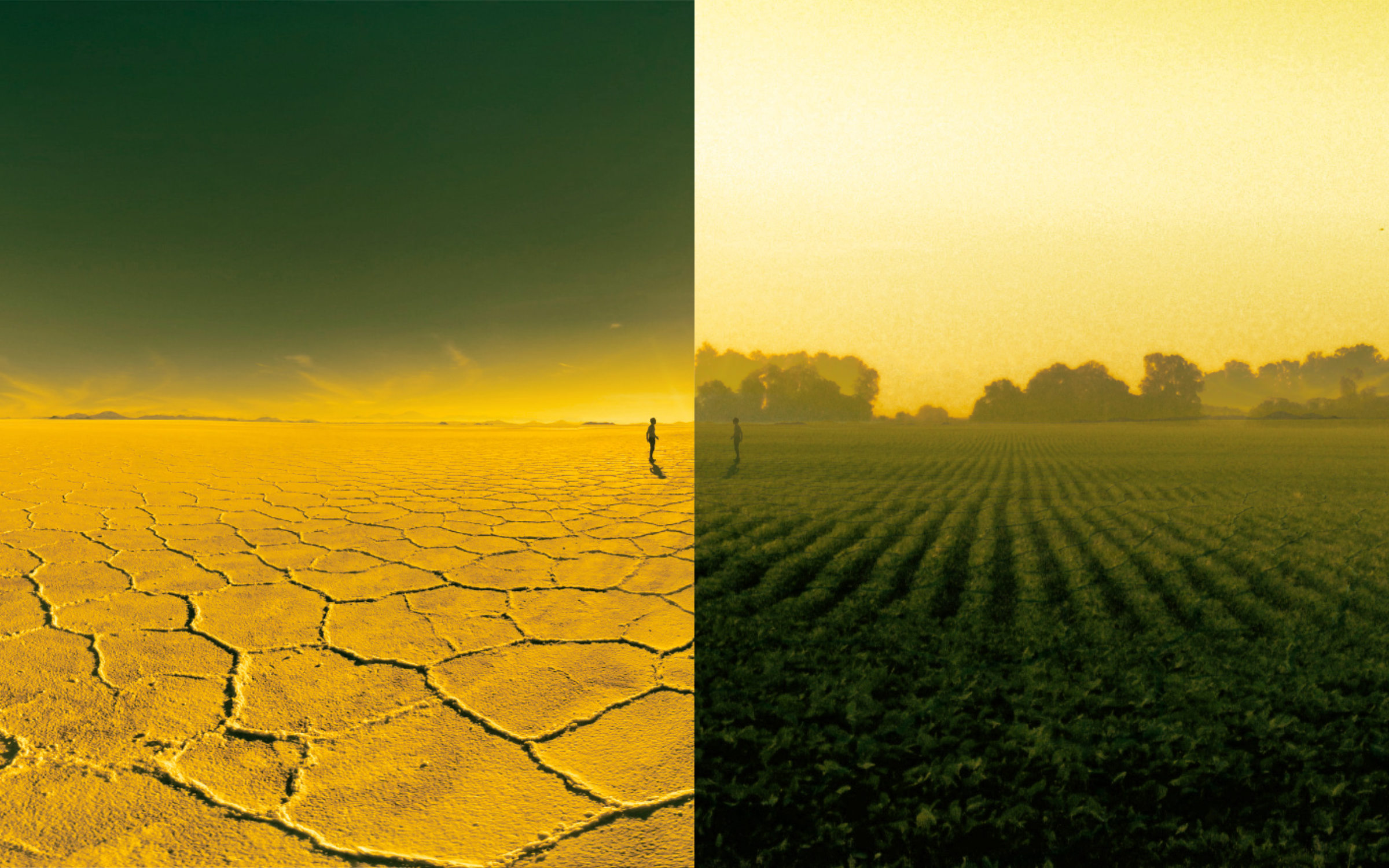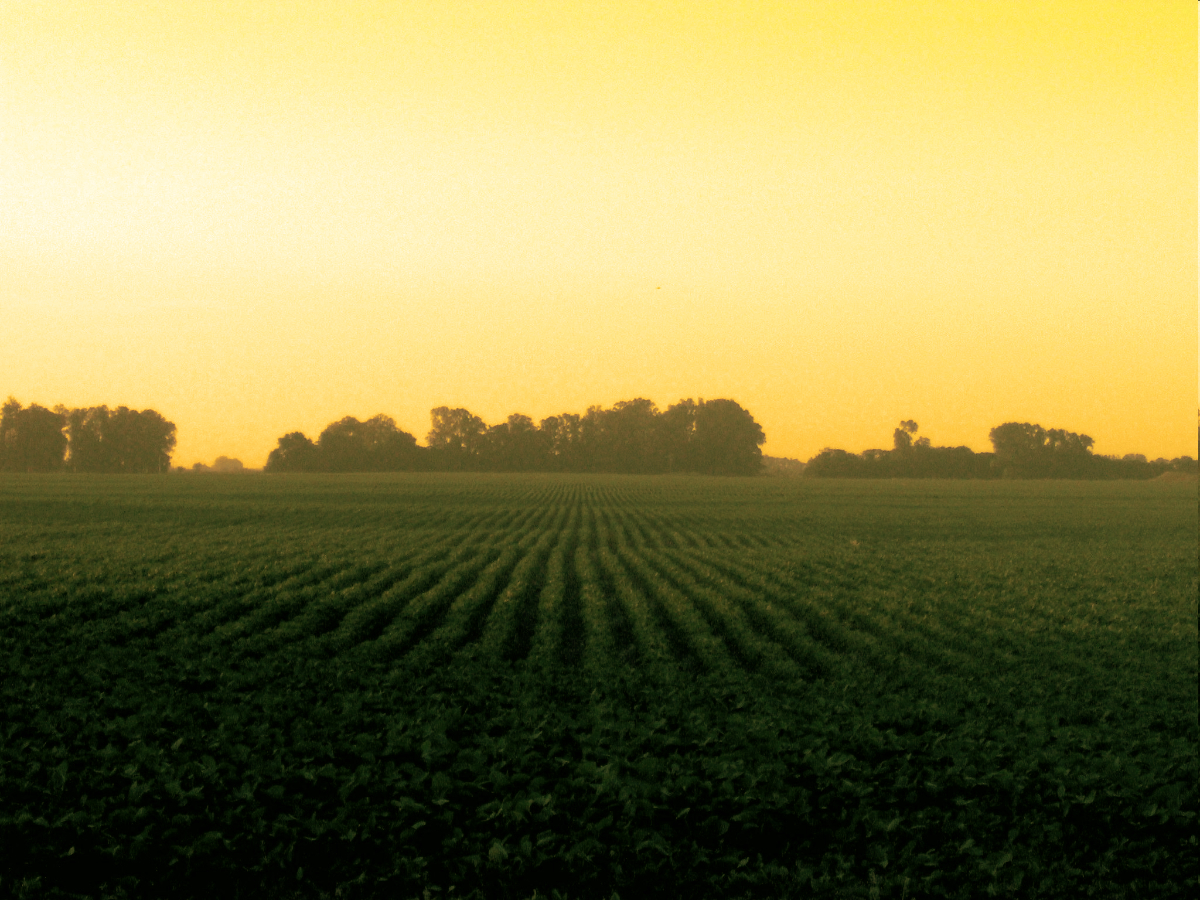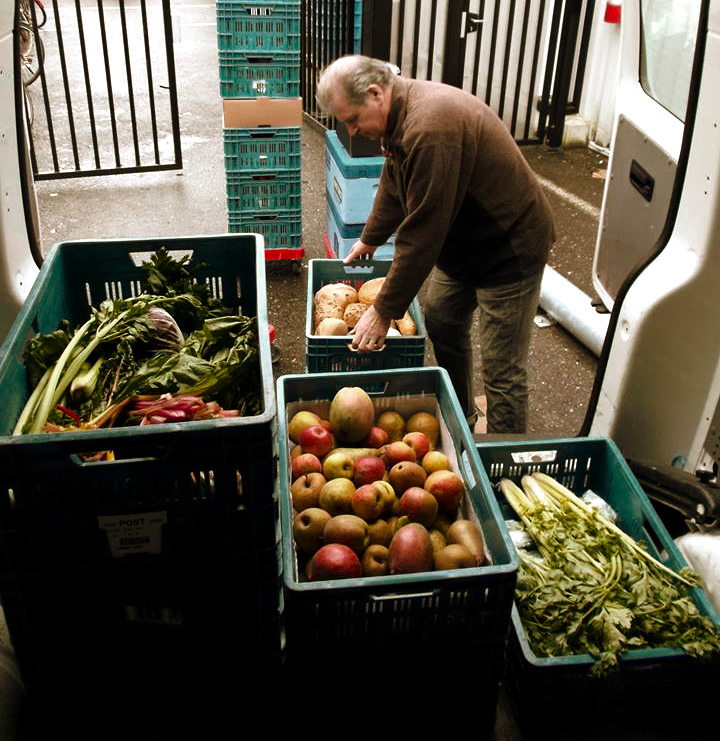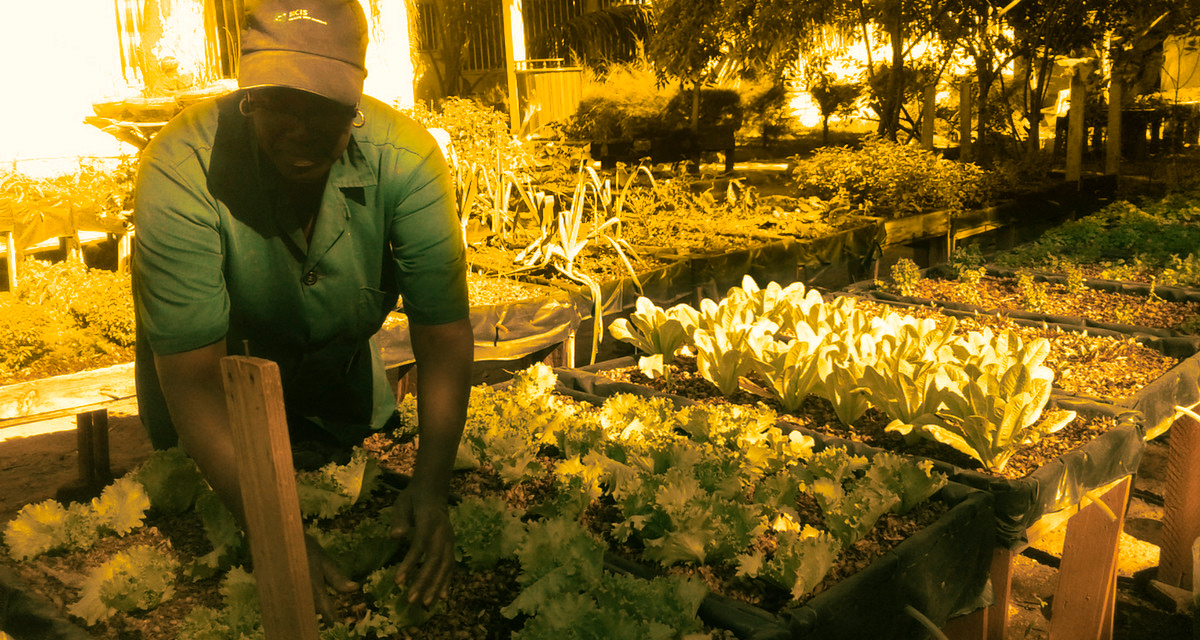The New Gastronome
3 Freaking Ways to Overhaul the Food System
One Food Policy at a Time
by Bianca Minotti
by Bianca Minotti

What do the soybean trade war between China and the USA, the anti-food waste actions in Flanders and micro-gardens in Dakar have in common? They all represent different forms of food policies. But, what are food policies and why are they so important in our everyday life?
When I try to explain to my friends and family what I’m working on every day, I never receive the reactions that I expect. Explaining the importance of food policies in an easy way and without confusing people is far more complicated than it seems. In a nutshell, using the words of some of the great scholars in the field, food policy is “to food what economic policy is to economics, foreign policy to foreign affairs and social policy is to the shaping of society.” They involve the management of “who eats what, when and how; and of whether people (and animals) eat and with what consequences.”
Clearer? Probably not and that’s understandable. Food Policies influence and are influenced by a big number of sectors, actors, contexts, levels of actions and governance, which makes it hard to gather everything under one name. They are a collection of all policies – public and private, social and individual, explicit and implicit, voluntary and sometimes even involuntary – that shape and impact the food system.
Looking at the many different facets of food policies, I started to understand that it would be easier to explain their impact on everyday life by using some concrete examples, rather than trying to use definitions. So that’s what this article is going to do.
Food Policies are Multi-Sector: the Soybean Trade War.
The most important thing to remember when reading about food policies is that they can be anything and anywhere, sometimes invisible and often carrying different names. This is because food policies can be the result of other policies as well as being their own separate entities.

Landscape of a soybean field in Argentina | Original photo source.
Take, for example, the soybean market: Soybeans are oilseeds. So, on first glance, they are not much different from peanuts, except that the soybean market is more similar to the oil market than to any other one in the world of food. Last year, global production reached 257 million tons of which only 6% were directly used for human consumption. The biggest producers are the USA (35% of the market), Brazil (28.7%) and Argentina (17%), who export almost all of their produce to China, who uses it to feed the biggest meat production in the world, and to Europe.
Without going too in-depth into the topic, it is easy to imagine what kind of impact this type of crop can have. Soy production is massive and continuously growing due to its high demand, destroying biodiversity all around the world and strongly influencing climate change. So, what would happen if the biggest producer started an international trade war with the biggest importer? Since 2018, when the United States and China introduced trading taxes on each other’s key exports, this is not a theoretical question anymore. As President Trump imposed a tax of 25% on steel and of 10% on aluminium, China responded with an increase in duties of more than 128 products, including the soybean. In fact, China, who used to purchase 60% of all US exported soybean agricultural products, even went so far as to raise the US soybean tax by 25%, which didn’t just impact the United States themselves but also created a knock-on effect on both the Canadian and the South American markets. If these markets were to start shaping their soybean production to meet the Chinese needs, it would have a huge ecological impact.
“A crop that is not even primarily used as food per se might be fundamentally changing the environment, everyone’s socioeconomic stability and people’s diets all over the world. And though the USA – China trade war might not affect our daily life directly, it might still have a deeper impact within the whole food system.”
Furthermore, US farmers would suffer greatly too: “The U.S. government estimates farmers will have 900 million bushels – or approximately $8 billion – of last year’s soybeans in storage silos around the country when they start harvesting the next crop.” Most of them can’t simply stop production, as they are still paying back the investment they made to start planting soybeans years ago. Changing the crop now and investing in something else would be a huge waste of money, which means that, in 2019, US farmers will plant soybeans that will not be sold, wasting acre upon acre of land that could have been used differently.
Meanwhile, if China started buying soybeans from other countries, it would mean that the quality of their meat would change – to the better and without any additional costs, in the best-case scenario, but that’s not always how it works in the food world. Chinese meat might just as easily decrease in quality and increase in price, influencing a global dietary change.
To sum up, a crop that is not even primarily used as food per se might be fundamentally changing the environment, everyone’s socioeconomic stability and people’s diets all over the world. And though the USA – China trade war might not affect our daily life directly, it might still have a deeper impact within the whole food system.
Systemic Problems Need Systemic Solutions: Food Waste in Gent.
The food system is interconnected and so are the problems caused by it. So far, linear approaches have only proven that siloed solutions are not working effectively and that, instead, systemic changes need to be set in place for that kind of multifaceted problems.

Photo source:Food Savers
Take food waste, for example: one-third of the food produced is wasted and, unfortunately, this number doesn’t seem to be decreasing. Big companies are still producing more than what is needed, families are still not properly managing their everyday groceries and the number of those experiencing food poverty is ever increasing. Food losses happen at all stages of the supply chain, starting from agricultural production to consumers’ dishes and are caused by glitches in the system, like overproduction, marketing strategies, inefficiency in supply chain management, oversized portions at restaurants, poor consumer education, label confusion, and many more. This has a series of ecological, economic, cultural and ethical impacts, that some people – or, in this case, whole cities – are trying to rectify. Gent, for example, has created an online platform called FoodSavers, which aims to link surplus food between wholesalers, retailers and NGOs, in order to reduce food waste. In their own words, “FoodSavers provide quality and tasty food, based on food surpluses and by-products and with attention to people, the environment and society.” The platform works in five areas around Flanders already and is willing to expand, guaranteeing efficiency and a large scale of action. Using this kind of system has various advantages, like the reduction of CO2 emission loss, land and water use, economic benefits for donors form the VAT recovery and waste processing costs, as well as the redistribution of food, new employment and social integration for people in need.
“Food losses happen at all stages of the supply chain, starting from agricultural production to consumers’ dishes and are caused by glitches in the system, like overproduction, marketing strategies, and many more.”
FoodSavers also cooperate with NGOs to create new products from food surpluses, which are then donated or affordably offered in social grocers and social restaurants linked to the project. In the first 10 months since implementation, the results of this umbrella strategy were astonishing: 300,34 tons of food was redistributed, more than 30 donors were involved, 58 local charity and social restaurants were served and 18.971 people in need fed, while 762 tons of CO2 were saved and 19 new people got employed!
Gent is just one example of how to tackle interconnected problems with smart and systemic solutions. Many other cities are creating new ways of dealing with surplus and food waste as well, including Bruges’ project in Healthcare institutions, the Progetto Organico Porta Palazzo in Turin, and Milan’s food donations reduction of the waste tax.
A Little Step towards Big Changes: Micro-Gardens in Dakar.
As many other African cities, the capital of Senegal is trying to deal with growing urbanization and consequent food insecurity. In fact, even though urbanization may sound like a push towards development when a city grows too rapidly, it may adopt unsustainable solutions. This is the case in many Sub-Saharan cities like Dakar. The more the urban area grows, the less arable land the country has left and the harder it gets to feed the city. According to the FAO, “many households in urban areas spend a substantial part of their food basket on cheap, energy-dense or nutrient-poor food and face sanitation conditions that are less than ideal,” which is why ensuring food security is so important. As cities continue to grow, food policy has to influence the direction of that growth.

Micro garden in Dakar | Photo source: BarzaWire
The municipality of Dakar has built a support system to involve citizens in micro-gardening. This new urban type of gardening consists of standing tables composed of recycled wood, bottles, vases and tires, as well as soil substrate made with recycled peanut shells and rice straw. In addition to these public spaces dedicated to micro gardening, there are also 19 areas, where educational workshops and training take place. All of the garden areas are innovatively designed, occupy very little space and use minimal amounts of water. They are accessible to all and give way to integrate women into the workspace, as well as to offering the elderly an opportunity to earn an income and provide food for their families. This solution tackles the problem of waste, by using recycled materials, of social exclusion, by empowering people in need, and of food sovereignty, by giving food to the people and by also teaching them how to deal with increased urbanization.
“The municipality of Dakar has built a support system to involve citizens in micro-gardening. This new urban type of gardening consists of standing tables composed of recycled wood, bottles, vases and tires, as well as soil substrate made with recycled peanut shells and rice straw.”
This shows that food policies are multilevel, which, in turn, means that they can involve local, national and international types of power. In most cases, these multiple layers of governance are vital for problem-solving, so understanding their influence is fundamental. In some cases, city projects can be a good starting point, but, in order to generate greater change, these actions need to be coordinated and shared between different communities. A current example would be the city-to-city cooperation plan the FAO is working on to tackle the problem of urbanization.
This article has tried to explain what food policies are, by reflecting on their importance in everyday life; by giving an idea of what the ingredients are and by describing them in an easy and – some may even say – reduced way. As there are many more things to be said about the topic, I recommend finding relevant literature, as many authors have dedicated their lives to explaining that food needs to be on any political agenda as much as it needs to be on everyone’s personal one.
Furthermore, food policies are not only a matter for scholars, governments or food businesses, but they are also the choices each and every one of us makes on a daily basis! I would, therefore, also recommend connecting the given examples with other ones to start new conversations as to why food policies matter.
References: